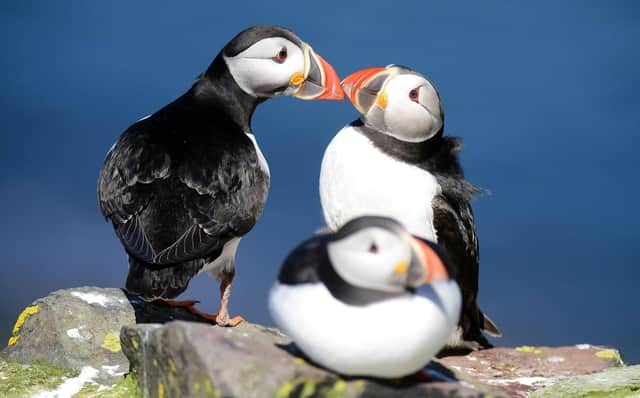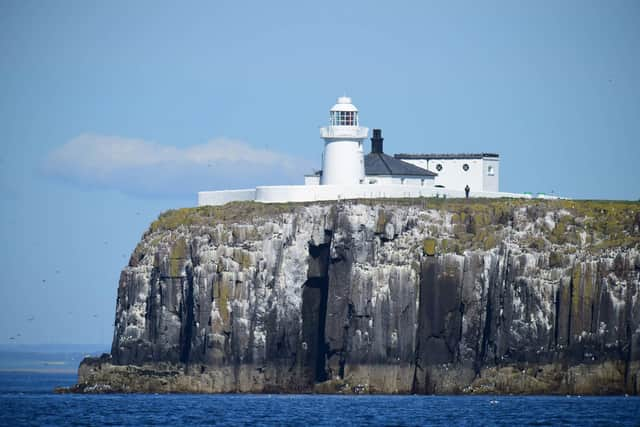Puffin numbers on Northumberland's Farne Islands stable despite last summer’s wash-out


There were concerns that the population would be affected after devastating rainfall flooded numerous burrows on the islands last year.
At least 300 young puffins - called pufflings - died on June 13 when 5in (12cm) of rain fell in just 24 hours.
Advertisement
Hide AdAdvertisement
Hide AdHowever, a National Trust survey, which involved checking a proportion of burrows, revealed only a 0.5% decrease in the 2018 population, with a total of 43,752 breeding pairs recorded in 2019.


National Trust ranger, Thomas Hendry says: “When we were hit by such heavy rainfall we were really concerned that numbers would be significantly affected, which given these birds are declining in numbers across the world was a devastating prospect.
“However, it appears that we had enough pufflings hatch successfully to literally weather the storm, and we can conclude numbers appear to be stable.”
Puffin numbers on the islands have increased over the past 26 years, with 37,710 pairs recorded in 1993. Numbers then peaked at 55,674 pairs in 2003 before a sudden crash in 2008 when extremely low numbers of sand eels – their preferred food supply - meant the number of breeding pairs dropped by a third, before slowly recovering.
Advertisement
Hide AdAdvertisement
Hide AdThe fear is that climate change will put pressure on the Farnes population, with greater stresses on the food chain and more frequent winter storms affecting the population at sea.
Mr Hendry continued: “The annual survey is allowing the rangers get a better picture of the causes of seabird declines, tracking puffin numbers against likely causes of population change from island-based factors such as seal distribution or predatory gull numbers to changes in the frequency of storms and summer rainfall as a result of climate change or changes in the sand eel population.”
Dr Chris Redfern, Emeritus Professor in the School of Natural and Environmental Sciences at Newcastle University, who helped to verify the figures said “It is great to see consistency between the first two annual counts since the new method was introduced in 2018.